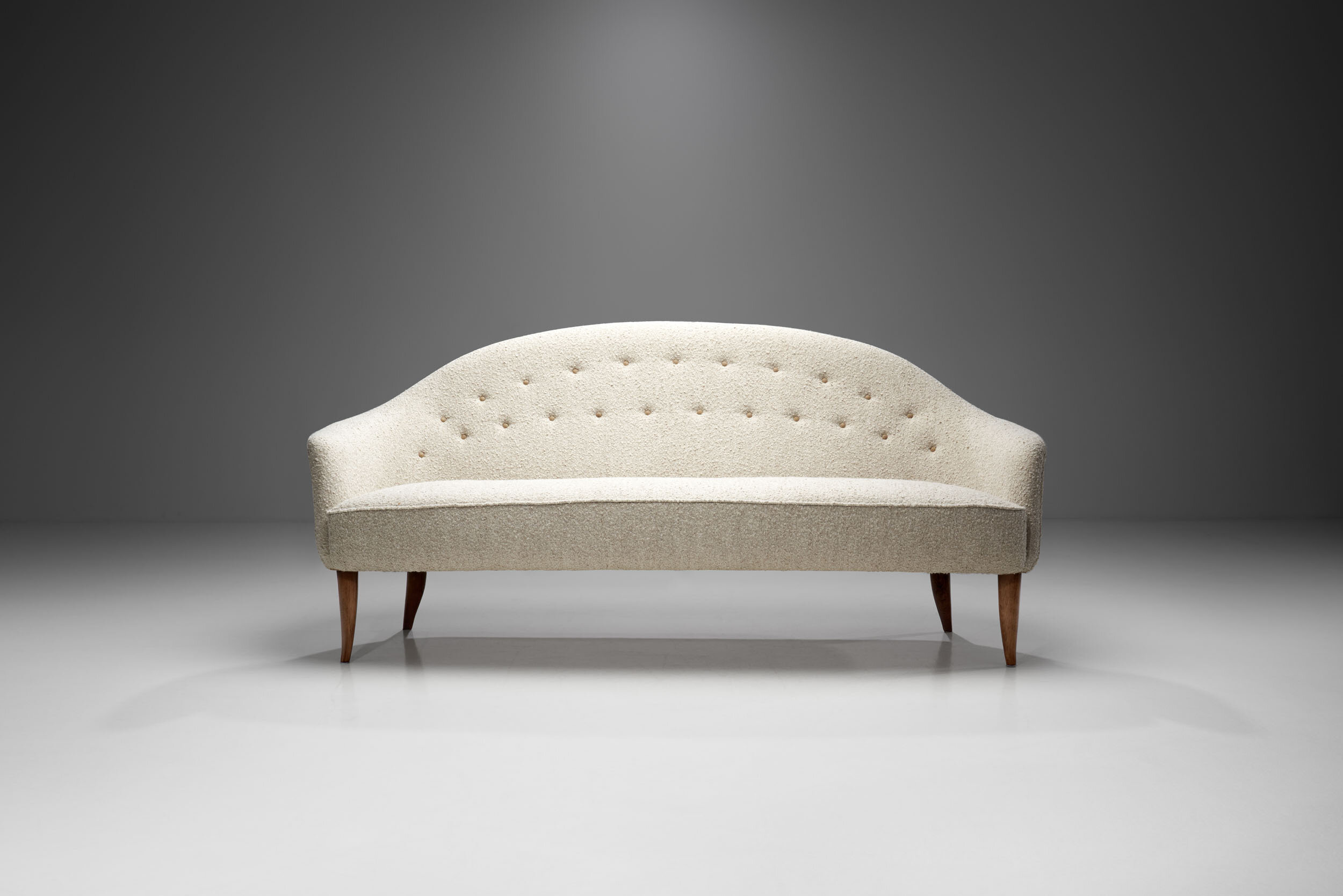Kerstin Hörlin-Holmquist
Kerstin Hörlin-Holmquist, born Kerstin Margareta Hörlin-Holmqvist, was born on the 30th of May in 1925 in Arvika, Sweden, to the artist Tor Hörlin and Greta Andersson.
Hörlin-Holmquist started her higher education in England, attending school there between 1945 and 1947 immediately after the war. She studied art history and became fascinated with the classic English upholstered furniture and style. She continued her studies at Konstfack University of Arts, Crafts and Design in Stockholm from 1948 to 1953. She already displayed her own creations during this period, including her “large and small Kraal” wicker chairs, which were tinged with the influence of African traditions. They were an interesting mixture of craftsmanship and industrial production, and were selected to be presented in Gothenburg during the “Möbler 52” exhibition, where they drew the attention of Nordiska Kompaniet. Already during her education, the head of NK Triva, Elias Svedberg, noticed the young and talented Kerstin Hörlin-Holmquist. Consequently, after her studies, she joined the NK. The company decided to include her works in its Triva (“feel good”) collection. Her designs were there on produced by NK’s workshops in Nyköping, quick starting Hörlin-Holmquist’s career. As early as 1952, the “Charlotta” chair arrived, and it was manufactured in hundreds of thousands of copies. In Finland alone, the chair was sold in over 200,000 copies over a 20-year period.
Hörlin Holmquist preferred soft lines, whereas straight lines and strict angles defined the fashion of the period. She was one of the first designers to use polystyrene to achieve her aesthetic purposes; always keeping a wooden structure, she used a combination of techniques to obtain the curves that are so characteristic of her “Paradiset” line. This timeless and iconic collection holds a soft simplicity and a uniqueness in their appearance - light, clean lines and yet gracious with an air of romance. Her graceful and characteristic mid-century furniture designs are often reminiscent of classic English furniture design, which show the influence of her years spent studying in England. A junior of Nanna Ditzel, she was part of the generation of Scandinavian women designers, like Grete Jalk and Tove Kindt-Larsen, full of fantasy and humour, always walking down her own design path, staying true to her own unique and humanistic design vision.
“I think both furniture and textiles, wherever they end up, must be kind, gentle and courteous, but without losing their character. They should have human qualities, not be pompous and only stand alone.”
Her collaboration with NK lasted till 1964, after which she worked for the furniture industry, A&C collection in Kristianstad. She decorated the Brukshotellet in Bofors and the Hubert Humphrey Institute in Minneapolis. The architect and designer often worked together with her husband, Erik Holmquist whom she married in 1950. Together they modelled and created furniture pieces. A key aspect for the couple was always to test their designs in their own home before completing a project. At the furniture fairs in the 1950s, 1960s and 1970s, Kerstin Hörlin-Holmquist's furniture attracted a great deal of interest. The interior design magazines sprinkled praise over her collections, for example the magazine Allt i hemmet, where Leila Fåhræus said that Kerstin Hörlin-Holmquist's furniture was 'Swedish furniture tradition at the highest level'. During the 1970s, Hörlin-Holmquist designed a beautiful garden furniture set, The Eden Collection, made of beech with brass-shod legs and paws.
Kerstin Hörlin-Holmquist is represented at, among others, the National Museum in Stockholm.
She is remembered for the humanism she applied to design, and her ability to see beyond short-lived trends. In 1992, a special exhibition was opened with her furniture and her father's paintings at Waldemarsudde in Stockholm. Kerstin Hörlin-Holmquist died in 1997, leaving behind a marvellous legacy. ~H.











